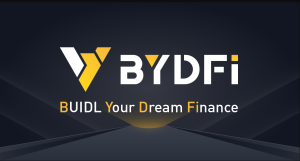Startup Financing Demystified: Funding Options for New Ventures

Where to get funds for the business of their dreams? Did you ever come across such an idea for a startup, and pause entirely because there was no financial backup? You are not alone; many wannabe entrepreneurs struggle to look for funds.
People tend to sidestep into entrepreneurship with great ideas and marketing tricks; a lack of finances is the real problem—the right tools to sanction funds for product development, advertisement strategies, and team building.
Understanding and identifying different financing options are crucial. While there is a lot of unknown information, this guide aims to simplify various available funds; we help analyze which funding choice is the right fit for you.
Bootstrapping: Building from Your Pocket
Bootstrapping means using your own savings or personal income to start a business. This particular strategy has proven to be really useful, especially if you’ve just started off. However, this method also has pros and cons.
If your money is burned, then so are all your savings. But there is no need to worry because there are a variety of ways to deploy and use technology to protect yourself.
Examples of companies that turned their dreams into a reality include Mailchimp and Basecamp, which are very well-known. Bootstrapping allows spending discipline and wise financial habits, which are highly beneficial for a startup.
If your startup has little to no funding, bootstrapping is likely the best and most optimal option for you.
Family and Friends: The Inner Circle Advantage
Relatives and companions are also options. This way of raising funds is often informal and based on trust. Investments can be lost, or loans can be forgiven, which carry set terms. Uncle Joe will definitely not turn you down without trying to help. Also, there is much less red tape regarding banks or other formal investors.
Still, honesty is the best policy. An agreement that sets expectations will be helpful, and there’ll be a much smaller chance of damaging relationships. Always consider this step as treating your formal investors.
Bank Loans: Traditional but Reliable
Bank loans offer advantages such as fixed repayment schedules and predictable payment amounts. However, banks can be stringent when lending to new startups. This option works best for business founders with good credit and assets, or those venturing into a business in a stable industry.
To improve your chances of securing a loan, create a detailed business plan outlining your market analysis, financial estimations, and a step-by-step guide on allocating funds.
Angel Investors: Funding with Mentorship
An angel investor is someone who invests personal funds into early-stage companies. They generally finance companies that they have faith in, which are often early-stage startups. In most cases, angel investors are seasoned entrepreneurs, so they can provide valuable advice. In addition to money, they offer sponsorships, powerful connections, and mentorship.
They usually expect some form of equity in return. This type of funding is advantageous for startups that require capital and expertise. An angel investor is ideal if you aim to receive tailored assistance alongside capital investment.
Your pitch should be direct but easy to understand. Please describe the problem your startup addresses, the potential customers, and how their investment will enable business growth.
Venture Capital: Big Money for Big Visions
Firms managing other people’s money are the sources of venture capital. VCs pour money into very promising startups that have a high chance of becoming gigantic corporations. In exchange, VCs get a chunk of equity, a voice in business decisions, and funding on a much larger scale.
This type of funding is best suited for innovative companies looking to grow quickly. The VC process involves several rounds of funding, starting with seed funding followed by Series A, B, and so on. Each round has to demonstrate strategic planning and solid performance.
Like all investors, venture capitalists want a good return on investment. If your startup is unable to meet its projected targets, the venture capitalists may abandon the investment or take over entirely. Be fully prepared for the expectations that come with massive funding and high internal and external pressure to deliver results.
Crowdfunding: Power of the People
Crowdfunding is raising small amounts of capital from various people at once. The most common forms of this are Kickstarter, Indiegogo, and GoFundMe. As a user, you can pitch your project and get backers who will invest in it in exchange for certain perks, products, or even shares. Your idea will be funded by backers.
This technique aids in proving your product’s market fit in the business validation process. Demand strongly indicates that people are willing to pay upfront. Crowdfunding also helps with marketing, as the awareness campaign is self-sustaining.
A great example would be including a WooCommerce product video on your campaign page. A product demo helps prospective backers grasp what your offering is and increases their chances of backing you. Trust and imagination are built when a video brings your idea to life visually.
Government Grants and Subsidies: Free but Competitive
The government often gives out grants to foster innovation and aid small businesses. The best part is that these grants are free and don’t need to be paid back. These grants can come from national, regional, or local programs.
Every grant has equally strict rules and an application process. You might have to justify some social impact, innovation, or new job opportunities. If you meet the requirements, this becomes excellent funding without losing equity.
Always pay attention to local business support programs, especially in tech, green energy, health, and education. Many countries offer additional funding resources for startups owned by women or minorities.
Business Incubators and Accelerators: Growth with Guidance
Startups are allowed to grow rapidly through the use of incubators and accelerators. Networking, office space, mentoring, and funding are all provided through these structured programs. Typically, accelerators last 3-6 months and culminate with a “demo day” pitch session for investors.
Prominent startups have been launched from programs like Y Combinator and Techstars. These programs usually take equity to provide their support. In return, you receive funding, visibility, and skills.
This form of funding is best suited for very early-stage startups with a well-defined product and an expandable team. Getting into a top program is not easy, but it is very beneficial in funding and unlocking partnerships.
Strategic Partnerships: Funding with a Purpose
Sometimes, organizations invest in startups that focus on specific areas of interest to the latter’s business line. For example, a large retailer might invest in a new delivery company to improve its logistics capabilities. These partnerships usually focus on potential synergy.
The startup receives the investment while the larger company gains technology innovation or a market share advantage. This arrangement works best if the startup addresses a significant issue for the partner.
When approaching potential partners, pitch how your startup supercharges their business and cuts costs. Be very blunt on the details, as some will want equity, but others will want limited ownership with exclusivity or a joint stake.
Revenue-Based Financing: Pay as You Earn
This financing model is more flexible since it is dependent on income. You receive capital and repay the loan as a percentage of your revenue until it is paid in full. You do not get equity funding, so you do not have to give away company shares.
This option works best for startups with consistent cash flow, such as SaaS and e-commerce companies. Payments are reduced during slow months, so there is a lower risk during those periods.
Currently, some digital platforms offer revenue-based financing, especially for subscription-based businesses and those selling apps or products online.
How to Choose the Right Funding Option
Not all startups are the same. Each of them has a distinctive set of criteria, and using them will help determine the stage of their business. Ask yourself the following questions about your business:
- Do I want to keep full ownership or share ownership stake?
- How quickly do I want to achieve growth?
- Is it possible to repay a loan during slower periods?
- Am I looking for mentorship and networking opportunities?
Consider starting with lower-risk methods such as crowdfunding or bootstrapping before moving on to debt and equity financing as your business grows. Having only one funding source is not ideal; use a mix-and-match approach to adapt to your business needs.
Finally, you will want to maintain clean records as well. They look into your credit history, spending habits, and plans. If you have a solid pitch with realistic goals and honest figures, your chances will increase greatly.
Conclusion
The financing choices available influence a startup’s future. Financing is not only about securing funds but also about finding strategic, mentorship, and long-term relationships. Nowadays, there are many ways to finance a business, from personal savings to venture capitalists.
As stated before, these factors must be taken seriously as they will affect the company’s objectives, team, and careers. Every successful startup started somewhere, and with the proper funding, yours can too.






